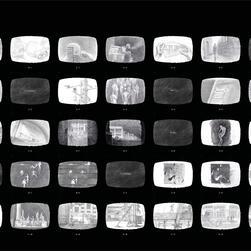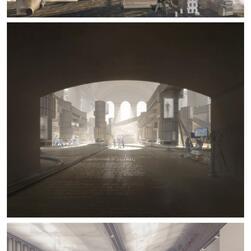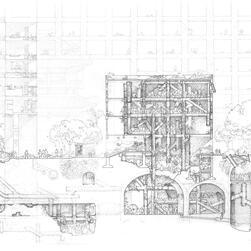Site[s] of Flux - Roaming Giant, Zachary Higson, Szczepaniak Astridge, UK, 2021
V-Ray
Winner of the Digital Category, 2021 and Winner of the Lockdown Prize, 2021, this project started with the artist drawing on-site at a quarry in the South Downs. However, the intervening lockdowns meant that the site could no longer be visited. Higson continued to engage with it through scans, photogrammetry, scale models and dioramas in his bedroom. In this image, a ‘roaming giant’ machine is positioned on the bed, which also comes to represent the landscape, and in doing so the room has been transformed into the actual architectural site, thus presenting an immersive, timely example of working from home.
Narinder Sagoo, Senior Partner at Foster + Partners and one of the Prize judges, explained that the work was selected as winner of the digital category because it ‘creates a Soane-like montage of models, photos and paintings within a two-dimensional picture plane. A drawing within a drawing, and more. One could explore this piece time and time again, discovering another level of genius each time.’










